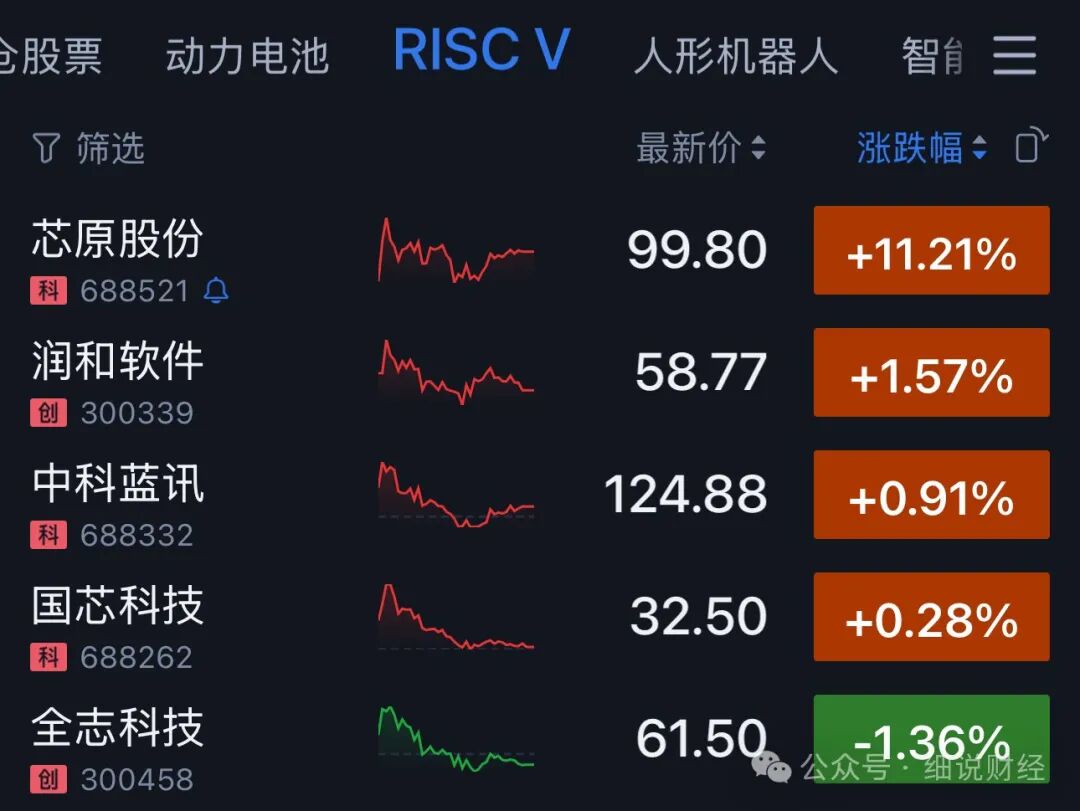I. Core Progress of Damo Academy’s XuanTie “High Performance + AI” RISC-V Full-Chain Layout
1. **Breakthrough Performance of the First Server-Class CPU C930**
The XuanTie C930 will begin delivery in March 2025, achieving a general computing performance of 15/GHz on the SPECint2006 benchmark, supporting flexible configurations from 16 to 64 cores, suitable for scenarios such as autonomous driving and network computing. This processor innovatively features a 512-bit RVV1.0 vector extension and an 8 TOPS Matrix dual engine, natively combining general computing power with AI computing power, and supports customized development through an open DSA extension interface, significantly enhancing the efficiency of complex AI tasks. For example, in AI inference, its Matrix engine can accelerate matrix operations, optimizing deep learning model deployment in conjunction with vector extensions. 2. **Strategic Planning for AI-Specific Processors**
The XuanTie family has also disclosed R&D plans for new members such as C908X and R908A: – **C908X**: The first AI-specific processor, supporting 4096-bit ultra-long vector extensions, suitable for large model training and inference, reducing deployment costs through a unified memory architecture (CPU and NPU share memory); – **R908A**: Designed for automotive-grade high reliability, adapted for smart driving chips; – **XL200**: Multi-cluster consistent interconnect design, supporting high-performance servers and data centers. 3. **Ecosystem Integration and Open Source Empowerment**
Damo Academy has launched three SDKs based on Linux, Android, and RTOS, integrating subsystems such as virtualization, security frameworks (CoVE), and AI operator libraries, significantly lowering development barriers. For example, the XuanTie Linux SDK has supported Hypervisor virtualization and edge-cloud collaborative AI frameworks, helping enterprises quickly build RISC-V + AI solutions. II. Potential Impact of RISC-V Policy Rumors and Opportunities in the Industry Chain
1. **Policy Background and Goals** It is rumored that eight departments (including the Ministry of Industry and Information Technology, the Cyberspace Administration, etc.) will jointly issue guiding opinions to encourage the nationwide adoption of RISC-V chips, with the core goal of reducing dependence on x86/ARM and promoting an independently controllable semiconductor industry. If the policy is implemented, it will accelerate the penetration of RISC-V in fields such as computing centers, AI servers, and edge computing, particularly benefiting domestic chip design companies. 2. **Technical Trends and Market Space** The openness of RISC-V makes it naturally adaptable to AI computing needs: – **Flexibility**: Instruction set extensions (such as Vector/Matrix) can optimize AI model inference efficiency; – **Cost Advantage**: Compared to ARM licensing fees, the open-source architecture lowers the entry barrier for small and medium-sized manufacturers; – **Ecosystem Collaboration**: Efficient models like DeepSeek reduce computing power requirements, allowing RISC-V CPUs to handle part of the AI load, promoting edge-side applications. 3. **Core Target Analysis of the Industry Chain**

– **Allwinner Technology (300458)**: Long-term cooperation with XuanTie, focusing on RISC-V ecosystem development, with products covering smart terminals and AIoT fields; – **Guoxin Technology (688262)**: Jointly developed AI chips based on NPU + RISC-V architecture with the Hong Kong Applied Science and Technology Research Institute, covering automotive electronics and industrial control; – **Chipone Technology**: As a founder of the China RISC-V Industry Alliance, leading the patent recognition ecosystem with strong technical reserves; – **Runhe Software (300339)**: Provides full-stack RISC-V solutions, covering chip design to application scenarios; – **Zhongke Lanyun (688332)**: Smart wearable chips with built-in RISC-V cores, already applied in AI glasses and other terminals.
III. Investment Strategies and Risk Warnings
1. **Short-Term Market Volatility and Entry Timing** Recently, stimulated by policy rumors, related stocks (such as Chipone and Yitong Technology) have seen limit-up, and the sector may face short-term adjustment pressure. It is recommended to focus on two types of opportunities: – **Verification of Technical Breakthroughs**: Such as performance testing after C930 delivery and orders from ecosystem partners; – **Clarification of Policy Details**: If the policy clearly indicates subsidies or procurement inclinations, it will form long-term benefits. 2. **Long-Term Logic and Risk Points** – **Technology Replacement Risks**: RISC-V needs to break through the x86/ARM ecological barriers, especially in high-barrier fields like servers; – **Geopolitical Impacts**: The U.S. may restrict RISC-V technology exports, requiring attention to international open-source community dynamics. **Operational Suggestions**: Prioritize layout of targets with core technologies (such as AI acceleration, automotive certification) and reasonable valuations (such as Guoxin Technology, Allwinner Technology), and gradually enter after sector adjustments. At the same time, pay attention to the order release rhythm of ecosystem partner companies (such as Zhongke Lanyun and Nasda).